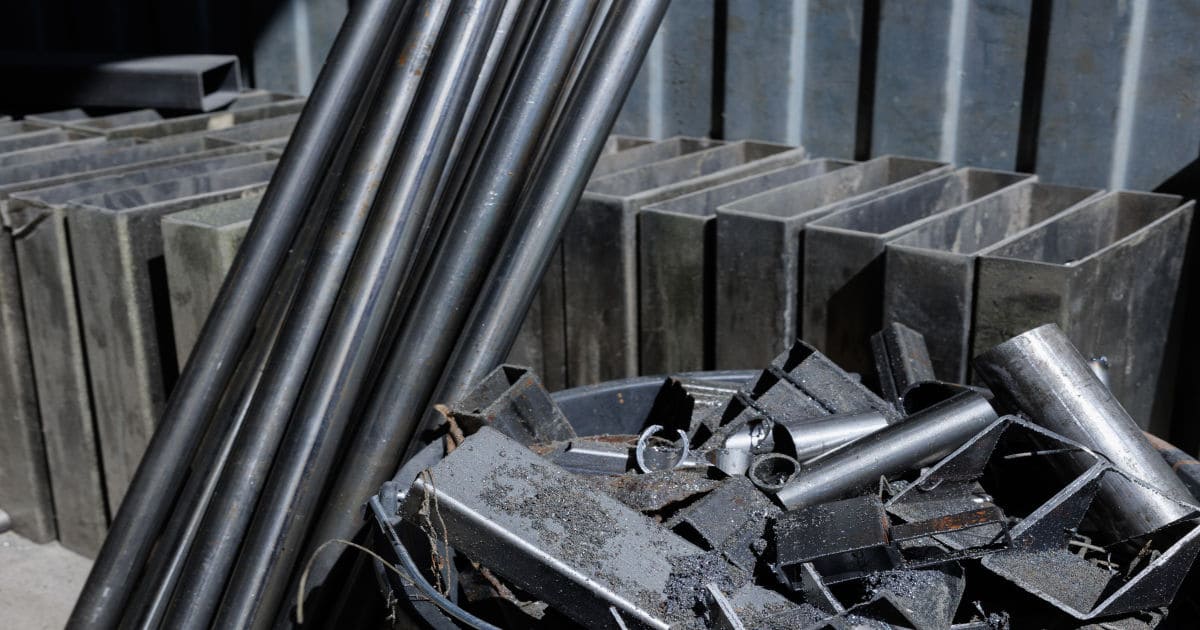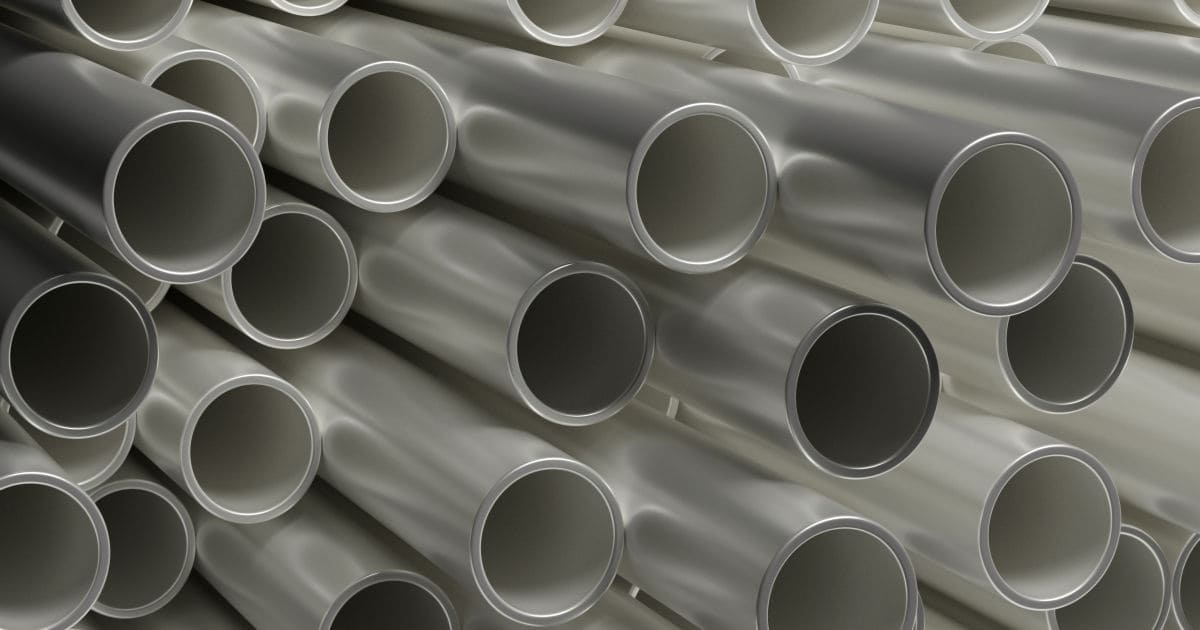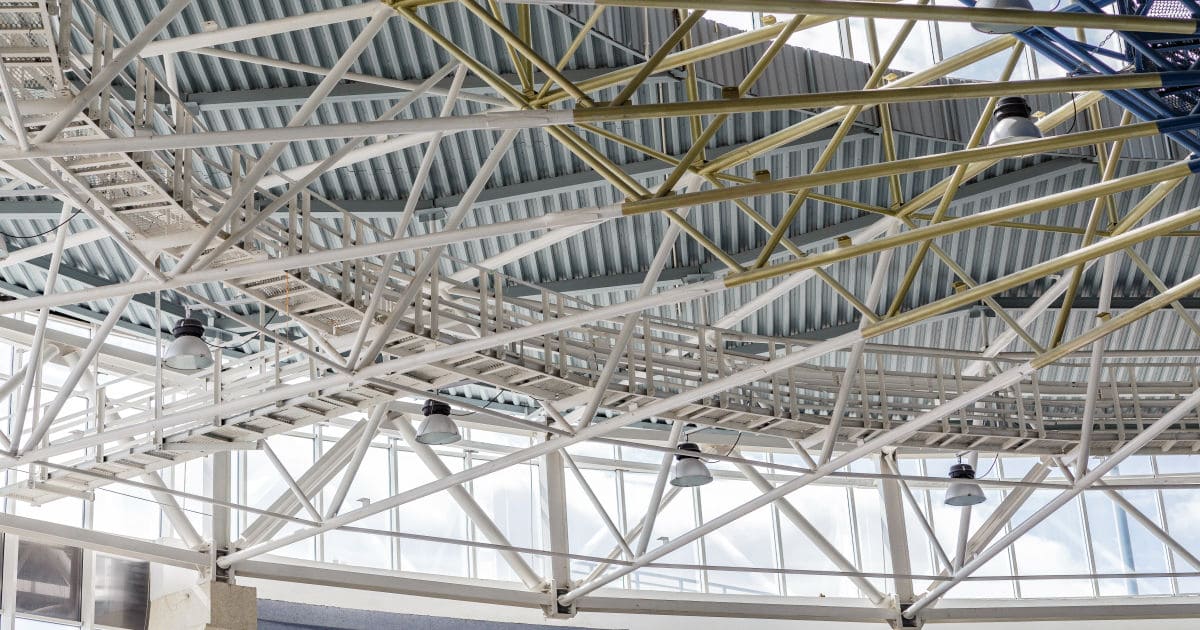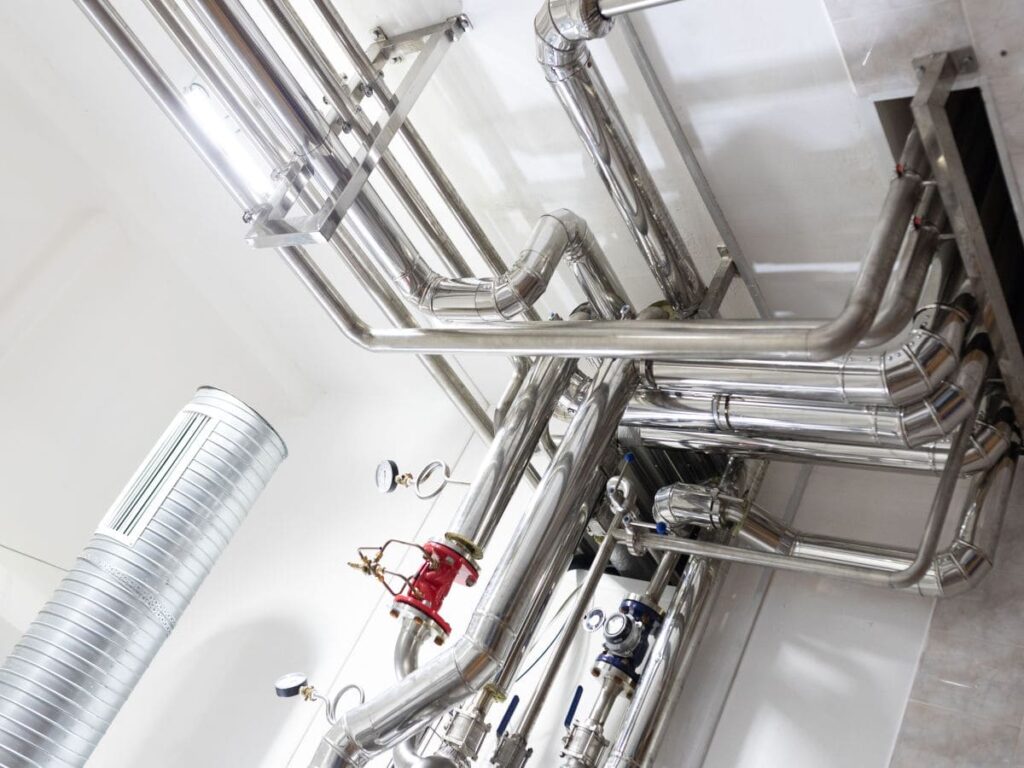Aluminum tubes are very important to many different industries worldwide. These versatile cylindrical structures, crafted from lightweight and corrosion-resistant aluminum alloys, find application in a wide range of sectors. Aluminum tubes play a big role in modern manufacturing and technology. Being widely used in these industries proves the material’s exceptional properties.
In a world where lightweight durability and corrosion resistance are very important, aluminum tubes are a top choice. Their adoption across industries such as aerospace, automotive, construction, and HVAC systems shows their versatility and reliability. Whether you’re a professional seeking to make informed choices or simply curious about the countless products and structures, it is worth to learn more about aluminum tubes and their significance and uses.
Types of Aluminum Tubes
Seamless Aluminum Tubes
Seamless aluminum tubes are a remarkable engineering feat, distinguished by their smooth, uninterrupted surface and exceptional structural integrity. These tubes are manufactured through a precise and intricate process known as extrusion and piercing.
Seamless aluminum tubes have found their niche in industries that demand the utmost reliability and performance. In aerospace engineering, where weight savings and structural integrity are very important, these tubes are used extensively in constructing aircraft frames, landing gear, and hydraulic systems. Also, in the automotive sector, seamless aluminum tubes are employed in high-performance vehicles, providing lightweight components that enhance fuel efficiency and durability.

Welded Aluminum Tubes
Welded aluminum tubes, in contrast to seamless tubes, are crafted by joining two or more aluminum sections through a welding process. This process involves heating the edges of the aluminum sections until they melt and fuse, creating a strong, continuous joint. The most common welding methods for aluminum tubes are TIG (Tungsten Inert Gas) and MIG (Metal Inert Gas) welding, both of which offer precise control over the welding process to ensure a secure connection.
Industries across the spectrum rely on welded aluminum tubes for various applications. In the construction sector, they are frequently used for scaffolding, handrails, and structural supports due to their cost-effectiveness and the ability to customize lengths. In the automotive industry, welded aluminum tubes play a big role in exhaust systems, which must withstand high temperatures and corrosive gases.
Extruded Aluminum Tubes
Extruded aluminum tubes are crafted through a specialized manufacturing process known as extrusion. This process begins with a cylindrical billet of aluminum, typically a specific alloy chosen for its properties, such as 6061 or 6063. The billet is heated to a malleable state and then forced through a die, which imparts the desired shape to the aluminum as it emerges on the other side. Extrusion enables the creation of aluminum tubes with a wide range of shapes, sizes, and cross-sectional profiles, including circular, rectangular, and square.
Extruded aluminum tubes are necessary in construction and architecture due to their unique properties. They are commonly used to construct frames for doors, windows, and curtain walls. Their lightweight nature makes them easy to handle and install, while their durability ensures long-lasting structural integrity. Customizing the shape and dimensions of extruded aluminum tubes allows architects and builders to bring innovative and functional designs to life, making them an integral component of contemporary construction and architectural projects.
Drawn Aluminum Tubes
Drawn aluminum tubes are created through a precision manufacturing process known as cold drawing. This method starts with a solid aluminum billet or a previously extruded tube. The billet or tube is cleaned and coated with a lubricant to reduce friction. It is then pulled through a series of dies with progressively smaller diameters. As the aluminum passes through these dies, it is cold-worked, reshaping at room temperature. This process continues until the tube reaches its desired dimensions and smoothness.
Drawn aluminum tubes have a widespread use in various industries due to their exceptional precision and surface quality. They are commonly employed to manufacture precision instruments and equipment, such as telescopic antenna masts, where exact dimensions and smooth surfaces are critical for performance. Drawn aluminum tubes are also used to produce hydraulic cylinders and piston rods due to their strength and dimensional accuracy. They are also a popular choice for various applications in the automotive sector, such as air conditioning systems and shock absorbers that require tight tolerances and consistent quality for reliability and performance.

Structural Aluminum Tubes
Structural aluminum tubes are distinguished by their exceptional structural integrity and strength-to-weight ratio. These tubes are designed and manufactured to withstand heavy loads, making them a vital component in various industries and applications that require structural stability. Their unique properties stem from using high-strength aluminum alloys, such as 6061 and 6063, combined with precise manufacturing processes.
Structural aluminum tubes are widely used in construction, where they serve as key components in the framework of buildings, bridges, and other infrastructure projects. Their lightweight nature simplifies transportation and installation, while their strength allows for creating durable and stable structures. The aerospace industry relies on these tubes for aircraft structures, where they provide a balance between weight reduction and structural integrity, contributing to fuel efficiency and performance. Structural aluminum tubes also find applications in the transportation sector, including fabricating lightweight yet robust bicycle frames and components.
Heat-Exchanger Tubes
Heat exchanger tubes are purposefully designed to facilitate the efficient transfer of heat between two fluid mediums in various industrial and commercial applications. These tubes have specific features that optimize heat transfer and are important components in heat exchange systems.
A few key elements characterize the design of heat exchanger tubes. First, they often have a finned or ribbed exterior surface, which increases their surface area. This extended surface area improves heat transfer by promoting greater contact between the fluids and the tube walls. Second, heat exchanger tubes are typically made from materials with excellent thermal conductivity, and aluminum is a prime choice due to its high thermal conductivity properties. Third, they may have intricate internal configurations, such as spiral or twisted designs, to enhance turbulence and promote efficient heat transfer. These features collectively enable thermal energy transfer from one fluid to another, making them invaluable in applications where temperature control or heat recovery is important.

Alloy Varieties
6061 Aluminum Tubes
6061 aluminum alloy is renowned for its remarkable combination of attributes, making it a preferred choice for various applications. This alloy, composed primarily of aluminum, magnesium, and silicon, exhibits various advantageous characteristics. Firstly, it is exceptionally lightweight, boasting a low density that contributes to its widespread use in industries seeking weight reduction without compromising structural integrity. Secondly, 6061 aluminum displays remarkable tensile strength, making it suitable for constructing load-bearing components where durability is paramount. This alloy also boasts commendable corrosion resistance due to the protective oxide layer that naturally forms on its surface. This corrosion resistance ensures its longevity in diverse environmental conditions. 6061 aluminum is also notable for its machinability, allowing it to work into intricate shapes and structures easily. Lastly, its weldability is a key feature, enabling the efficient joining of components through common welding techniques.
Industries that Frequently Use 6061 Aluminum Tubes:
The versatility and advantageous properties of 6061 aluminum alloy render it indispensable in many industries. In aerospace, 6061 aluminum tubes are widely employed for aircraft structures, including fuselages, wings, and landing gear components. Its lightweight construction and exceptional strength are pivotal in enhancing fuel efficiency and ensuring structural integrity. Its lightweight nature simplifies transportation and installation, while its robustness ensures long-term stability. 6061 aluminum tubes are also favored in producing sporting equipment, where the alloy’s strength-to-weight ratio is important for performance enhancement.
6063 Aluminum Tubes
6063 aluminum alloy is characterized by its unique properties, making it a versatile choice across several industries. Composed mainly of aluminum, with magnesium and silicon as key alloying elements, 6063 is renowned for its exceptional extrudability. This means it can be easily shaped and formed through the extrusion process, allowing for the creation of intricate and customized aluminum tubes. It also boasts good corrosion resistance, making it suitable for applications exposed to moisture and outdoor environments. The alloy’s smooth surface finish and the ability to be anodized or coated further enhance its corrosion resistance. Because of this, 6063 aluminum tubes are widely used in architectural and construction applications, where they serve as components for window and door frames, curtain walls, and various structural elements.
Compare 6063 with Other Common Alloys
When comparing 6063 aluminum alloys with other frequently used ones, it’s important to recognize the distinctive characteristics that set them apart. For example, 6061 aluminum shares some similarities with 6063 in extrudability but typically exhibits higher strength. With this, 6061 is often favored in applications that requires strength, such as structural components. In contrast, 6060 alloy is similar to 6063 in extrudability, but variations in chemical composition may result in differences in surface finish and corrosion resistance.
7075 Aluminum Tubes
7075 aluminum alloy is renowned for its exceptional strength, making it one of the strongest aluminum alloys. This alloy primarily consists of aluminum, zinc as its primary alloying element, and small amounts of magnesium, copper, and other elements. The 7075 alloy undergoes heat treatment processes, such as T6 tempering, to further enhance its strength properties. As a result, it is characterized by impressive tensile and yield strength. This makes it ideal for applications that demand structural integrity and reliability. 7075 aluminum is favored in industries where weight savings are crucial without compromising durability.
Discuss Its Significance in Aerospace and Sports Equipment
In the aerospace industry, 7075 aluminum alloy ensures aircraft’s structural integrity and safety. Its high strength allows for the constructing of lightweight but robust airframes, which are necessary for achieving fuel efficiency and overall performance. 7075 aluminum is prized in sports equipment for its strength and lightweight characteristics. Bicycle manufacturers, in particular, use this alloy widely to craft frames and components. By utilizing 7075 aluminum, they can produce durable but also agile and responsive bicycles.

Advantages of Aluminum Tubes
Lightweight and Durable
Aluminum tubes offer a unique combination of lightweight and durable, making them highly beneficial across various industries. Their low density makes them easy to transport and install, reducing project costs and energy consumption. Simultaneously, their durability ensures long-lasting structural integrity, making them an ideal choice in construction, aerospace, and automotive applications. Reducing weight without compromising strength is a game-changer in industries that rely on performance and efficiency.
Corrosion Resistance
One of the standout advantages of aluminum tubes is their natural corrosion resistance. The formation of a protective layer on aluminum creates a barrier that shields it from environmental elements, including moisture and oxygen. This inherent corrosion resistance ensures the longevity of aluminum tubes, reducing maintenance costs and the need for protective coatings. In applications where exposure to harsh conditions is common, such as marine environments and outdoor structures, the corrosion-resistant properties of aluminum tubes are necessary, contributing to their extensive use in such settings.
High Thermal Conductivity
Aluminum’s high thermal conductivity is a valuable property with far-reaching implications in various heat transfer applications. This characteristic enables efficient conducting and dissipating heat, making them indispensable in HVAC (Heating, Ventilation, and Air Conditioning) and refrigeration. Whether it’s efficiently cooling a building or ensuring the smooth operation of refrigeration systems, aluminum’s exceptional thermal conductivity contributes to energy efficiency and performance improvements.
Recyclability
Aluminum’s eco-friendly aspect lies in its recyclability. Aluminum tubes are highly durable and completely recyclable without any loss in quality. This sustainability feature reduces the environmental footprint of aluminum production and contributes to a circular economy. Industries and manufacturers prioritizing environmental responsibility find aluminum tubes an eco-conscious choice, aligning with global efforts to reduce waste and conserve resources. The recyclability of aluminum embodies its versatility and long-term viability as a material that supports sustainable practices.
Considerations When Choosing Aluminum Tubes
Application-specific Requirements
The selection of aluminum tubes is intricately linked to the specific requirements of their intended use. Different applications necessitate varying characteristics, such as strength, corrosion resistance, thermal conductivity, and dimensional precision. For example, in the aerospace industry, where lightweight and high strength is very important. Conversely, in architectural applications, extruded aluminum tubes offer the versatility to create custom shapes and designs for building structures. Understanding the unique demands of the application is crucial to selecting the right type to ensure optimal performance and reliability.
Cost and Budget
The cost can vary depending on the type, alloy, dimensions, and manufacturing processes involved. Seamless tubes, for instance, are generally more expensive due to the complex manufacturing method. On the other hand, welded or drawn tubes may be more cost-effective alternatives for certain applications. Consideration of the budget constraints is necessary, especially in industries where cost efficiency is a driving factor. A key decision point is balancing the desired properties and performance with the available budget.
Alloy Selection
The choice of aluminum alloy is necessary when selecting tubes, as different alloys offer distinct properties. 6061 aluminum is chosen for its strength and durability in structural applications, while 6063 is preferred for its exceptional extrudability. 7075 aluminum excels in aerospace and high-performance sports equipment due to its superior strength-to-weight ratio. The right alloy selection ensures the tubes meet the application’s performance, safety, and longevity requirements.
Diameter and Thickness
The dimensions of aluminum tubes, including their diameter and thickness, are important factors in tube selection. These dimensions directly impact the tubes’ load-bearing capacity, heat transfer capabilities, and resistance to external forces. The diameter and thickness of structural aluminum tubes determine their ability to support the weight of buildings. In heat exchanger systems, the dimensions affect the efficiency of heat transfer. With this, an accurate assessment of the required dimensions based on the application’s demands is needed.
Navigating the Aluminum Tube Universe: A Journey of Versatility and Utility
Aluminum tubes are unsung heroes in the modern world. The world of aluminum tubes is a bustling innovation. These versatile cylinders, lightweight yet durable, corrosion-resistant, and infinitely recyclable, are the backbone of countless structures and systems. We find a testament to the ingenuity of engineering, the quest for efficiency, and the commitment to sustainability. Whether shaping our skylines or enhancing our athletic prowess, aluminum tubes stand as silent champions, embodying the principles of form.
FAQ
Are Aluminum Tubes Better than Steel Tubes for All Applications?
Not necessarily. The choice between aluminum and steel tubes depends on the specific application. Their lightweight properties, corrosion resistance, and versatility make aluminum tubes suitable for various industries. Conversely, industries may prefer steel for applications requiring higher strength or extreme durability.
Can Aluminum Tubes be Used in High-Temperature Environments?
While aluminum has a relatively low melting point compared to other materials, it can still perform well in high-temperature environments. Certain specialized aluminum alloys with enhanced heat resistance may be more appropriate for extreme heat.
How do I Ensure the Aluminum Tubes I Choose Meet Industry Standards and Regulations?
Working with reputable suppliers and manufacturers who can provide certification and documentation for their products is essential to ensure compliance. Additionally, consulting with industry experts can help verify the suitability of the chosen aluminum tubes for your project.
References
American Society for Testing and Materials
Aluminum Stewardship Initiative

